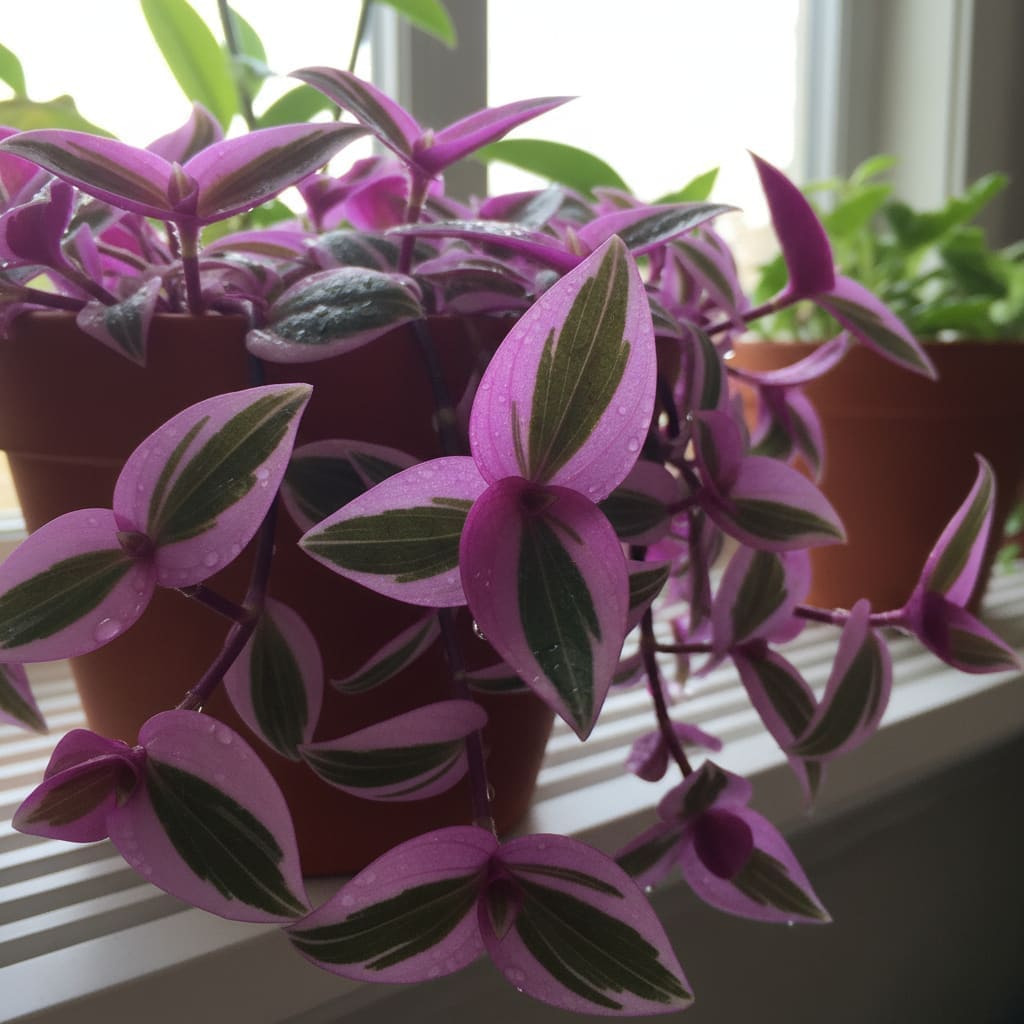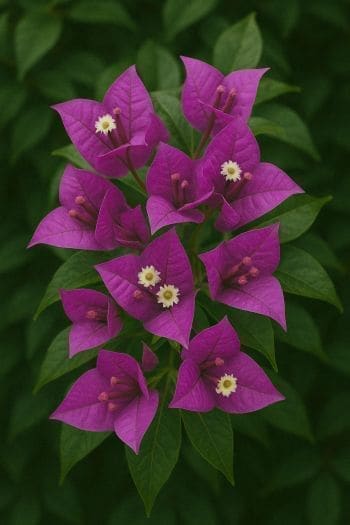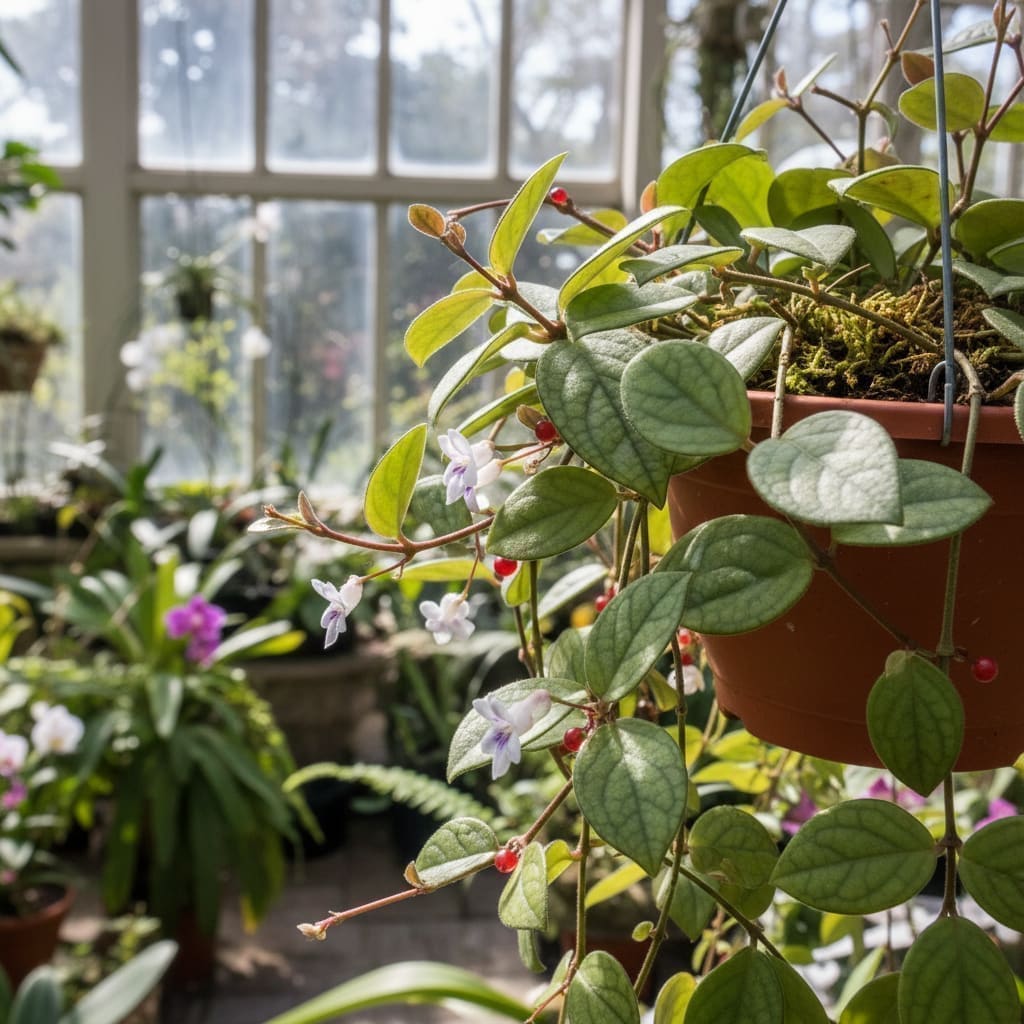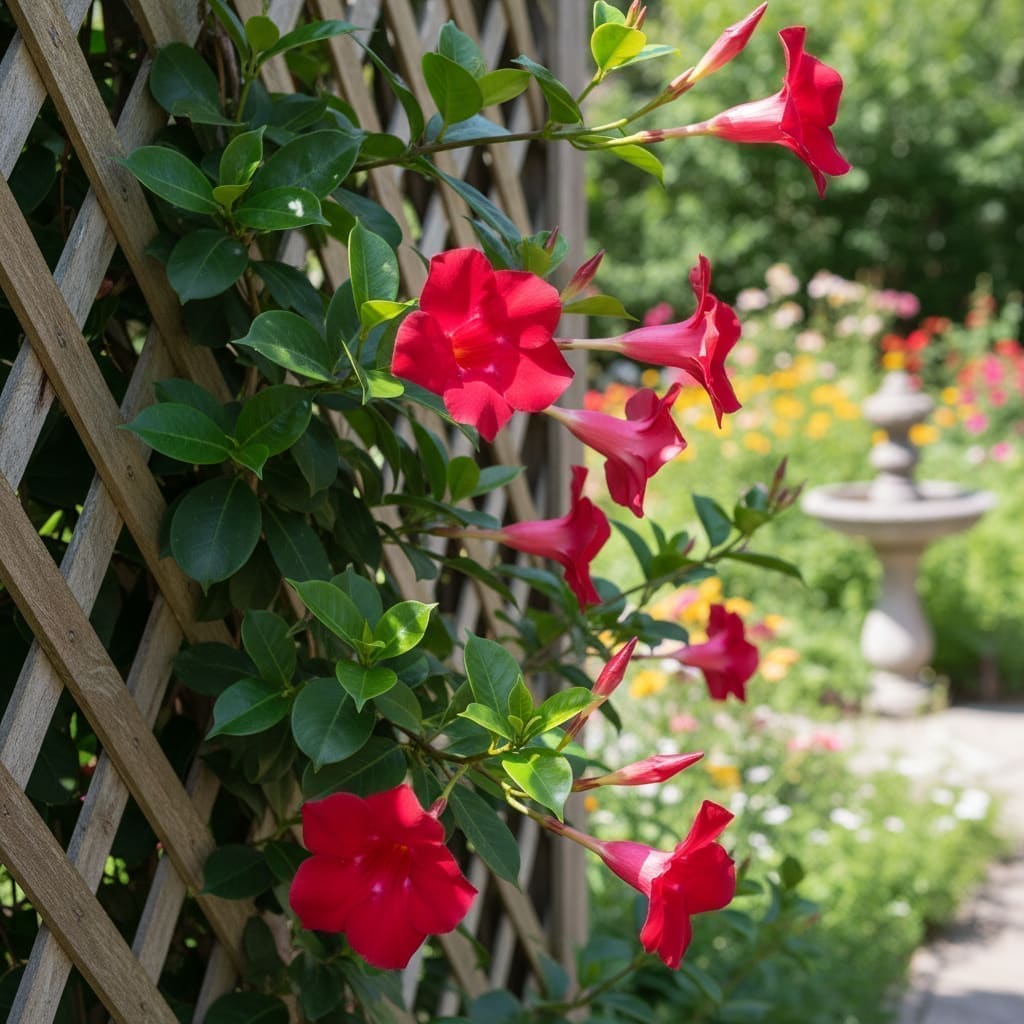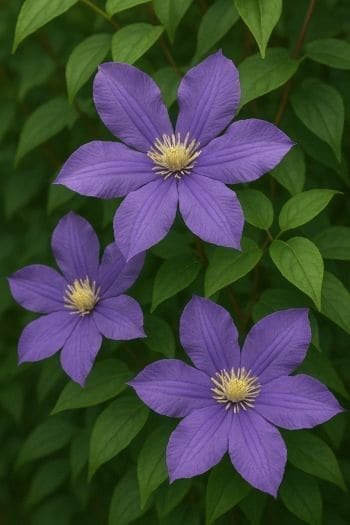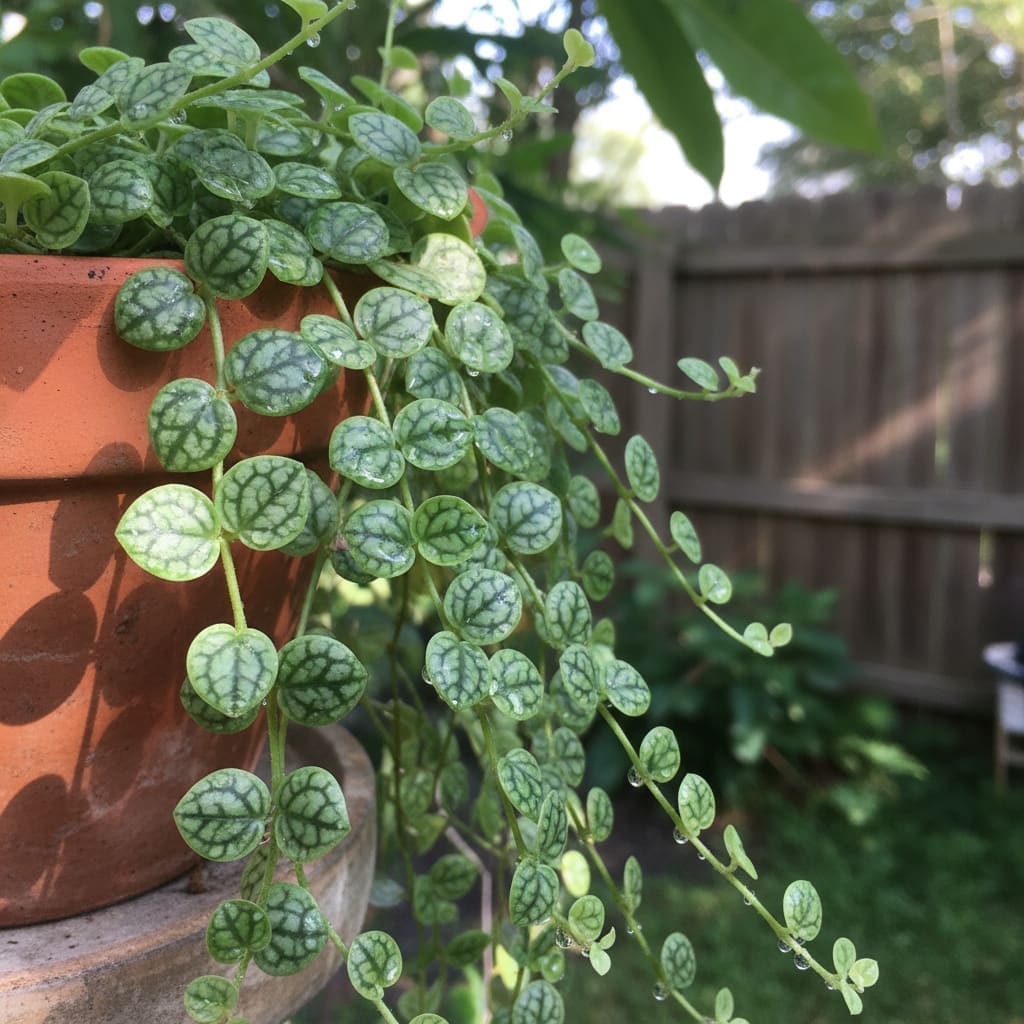Tradescantia albiflora ‘Nanouk’ Care & Growing Guide
Overview
Tradescantia albiflora ‘Nanouk’, also known simply as Tradescantia Nanouk, is a vibrant trailing houseplant prized for its striking pink, purple, and green variegated foliage. Native to Brazil, this patented hybrid was bred for enhanced color and durability compared to other Tradescantia species. Its compact growth habit and ease of care make it a favorite for both beginner and experienced indoor gardeners.
With proper light, watering, and humidity, Tradescantia Nanouk can produce lush cascades of foliage and even small white flowers. It is versatile enough to be grown in hanging baskets, on shelves, or trained to climb supports.
Identification & Growth Habit
Tradescantia Nanouk is a fast-growing perennial with a trailing or slightly climbing habit. Stems are thick and fleshy, supporting broad, lance-shaped leaves with bold striping in shades of pink, purple, and green. The undersides of the leaves often display more intense purple tones. In ideal conditions, the plant may produce small, three-petaled white blooms at the stem tips.
In containers, stems can trail 12–24 inches or more. When given a support such as a trellis or moss pole, it can be trained to climb, though it naturally prefers to cascade.
Light & Placement
Provide bright, indirect light for 6–8 hours daily. A position near an east- or north-facing window, or a few feet back from a bright south- or west-facing window with sheer curtains, works well. Avoid prolonged direct sunlight, which can scorch leaves, and low-light conditions, which may cause variegation to fade and growth to become leggy.
Rotate the plant every couple of weeks to ensure even light exposure and symmetrical growth.
Watering & Humidity
Water when the top inch of soil feels dry to the touch. Use a watering can with a long spout to direct water to the base of the plant, avoiding wetting the foliage to reduce the risk of rot. Ensure the pot has drainage holes and empty any excess water from the saucer.
Reduce watering frequency in winter when growth slows. Tradescantia Nanouk prefers moderate to high humidity. Grouping plants together, using a pebble tray with water, or running a humidifier nearby can help maintain optimal moisture in the air. Avoid placing the plant near heating vents or in very dry environments, as this can cause browning leaf tips.
Soil & Repotting
Use a well-draining, aerated potting mix. A blend of standard potting soil, perlite, and peat moss in roughly equal parts works well. This combination prevents waterlogging while retaining enough moisture for healthy growth.
Repot every 1–2 years in spring, or when roots begin to circle the pot. Select a container with drainage holes and only slightly larger than the current pot to avoid excess soil moisture retention.
Fertilizing
Feed monthly during the active growing season (spring and summer) with a balanced, water-soluble fertilizer diluted to half the recommended strength. Over-fertilizing can damage roots and diminish leaf color. Suspend feeding in autumn and winter when growth slows.
Pruning & Training
Regular pruning encourages bushier growth and prevents legginess. Use clean, sharp scissors or pruning shears to trim stems just above a leaf node. The cut stems can be used for propagation.
While Tradescantia Nanouk naturally trails, it can be trained to climb a small trellis or moss pole. Secure stems gently with plant ties, and rotate the plant to keep growth even.
Propagation
Step-by-Step Stem Cutting Propagation
- Select a healthy stem about 4 inches long with several leaves.
- Using sterilized scissors, cut just below a leaf node.
- Remove the lower leaves to expose the node.
- Place the cutting in a jar of water or directly into moist potting mix.
- If rooting in water, change the water every few days to keep it fresh.
- Keep the cutting in bright, indirect light.
- Roots typically develop in 1–2 weeks. Once roots are 1–2 inches long, transplant into soil if started in water.
Common Problems
Pests
- Spider mites: Look for fine webbing and speckled leaves. Treat with insecticidal soap or neem oil and increase humidity.
- Aphids: Small green or black insects on new growth. Remove with a strong spray of water or treat with insecticidal soap.
- Mealybugs: Cottony white clusters on stems and leaves. Dab with isopropyl alcohol on a cotton swab and monitor closely.
Diseases
- Root rot: Caused by overwatering or poor drainage. Remove affected roots, repot in fresh soil, and adjust watering habits.
- Leaf spot: Brown or black spots may result from fungal infection. Remove affected leaves and improve air circulation.
Toxicity & Pet Safety
Tradescantia Nanouk is considered toxic to pets if ingested, potentially causing irritation to the mouth and digestive tract. Keep out of reach of cats, dogs, and other animals, and seek veterinary advice if ingestion is suspected.
Styling & Decor Tips
- Display in a hanging basket to showcase its trailing stems.
- Place on a high shelf where foliage can cascade.
- Combine with green-leaved plants for contrast in a mixed arrangement.
- Use a decorative pot that complements the pink and purple tones.
Varieties & Cultivars
Tradescantia albiflora ‘Nanouk’ is a distinct patented cultivar and does not have officially recognized sub-cultivars. However, it is part of the broader Tradescantia genus, which includes other popular varieties such as Tradescantia zebrina and Tradescantia fluminensis.
Buying Tips & Maturity
When purchasing, look for plants with firm, brightly colored leaves and no signs of pests or rot. Avoid specimens with limp stems or significant leaf browning. Young plants establish quickly and can reach mature trailing length within a single growing season under optimal conditions.
Seasonal Care
- Spring/Summer: Active growth period; increase watering frequency, fertilize monthly, and prune to shape.
- Autumn: Gradually reduce watering and stop fertilizing as growth slows.
- Winter: Keep in a bright spot away from drafts; water sparingly and maintain humidity.
FAQ
- How often should I water Tradescantia Nanouk? Water when the top inch of soil is dry, reducing frequency in winter.
- Can Tradescantia Nanouk grow in low light? It will survive in lower light but may lose variegation and become leggy; bright, indirect light is best.
- Why are my plant’s leaf tips turning brown? Likely due to low humidity, inconsistent watering, or excess fertilizer.
- Does Tradescantia Nanouk flower indoors? Yes, it can produce small white flowers in good conditions, though foliage is the main attraction.
- Is it safe for pets? No, it is toxic to cats and dogs if ingested.
